Why Choosing Acid Fracturing Technique to Enhance Oil and Gas Production
Acid fracturing is a well stimulation technique used to boost oil and gas production in underground reservoirs. Unlike its counterpart, hydraulic fracturing which uses proppant to hold open cracks in rock, acid fracturing relies on a different approach. Let’s delve into the key aspects of acid fracturing and understand how it unlocks trapped hydrocarbons.
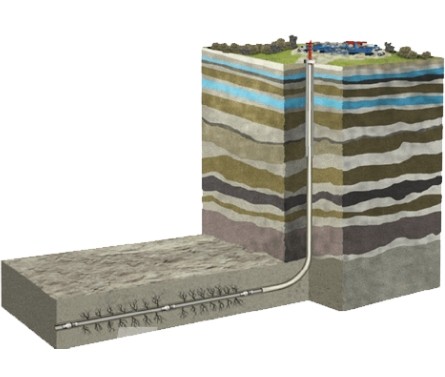
A Step-by-Step Look at Acid Fracturing
1. Preparation and Pre-flush
The well is prepared for the treatment by removing any debris or blockages. Sometimes, a pre-flush with a non-reactive fluid might be used to clean the wellbore and improve overall wellbore health.
2. Pad Fluid Injection
A viscous, non-reactive fluid, often a gel, is pumped down the wellbore at high pressure. This pad fluid serves two purposes:
- Fracture Initiation: The high pressure creates a fracture in the rock formation. The viscous nature of the pad fluid helps control the direction and growth of the fracture.
- Acid Diversion: The pad fluid also acts as a barrier, preventing the acid from entering the formation too readily near the wellbore where it’s injected. This ensures the acid reaches deeper into the formation for better overall stimulation.
3. Acid Injection
Following the pad fluid, the actual acid, typically hydrochloric acid (HCl), is pumped down the wellbore. This acid reacts with the rock formation, particularly carbonates, dissolving minerals and creating channels within the fracture.
4. Optional: Diverting Agents and Acid Blends
Sometimes, additional chemicals or diverting agents might be used alongside the acid. These can help control the flow of acid within the fracture, ensuring it reaches the desired areas of the formation for optimal stimulation. In some cases, different acid blends might be used for a more targeted approach depending on the formation characteristics.
5. Shut-in and Flowback
Once the desired volume of acid is injected, the well is shut-in for a specific period. This allows the acid time to react with the formation and create the necessary flow channels. After the shut-in period, the well is opened, and the fracturing fluid (including spent acid) flows back to the surface.
6. Post-Treatment Evaluation
Following the flowback, the well is evaluated to determine the effectiveness of the treatment. Production rates and other wellbore data are analyzed to assess the success of the acid fracturing job.
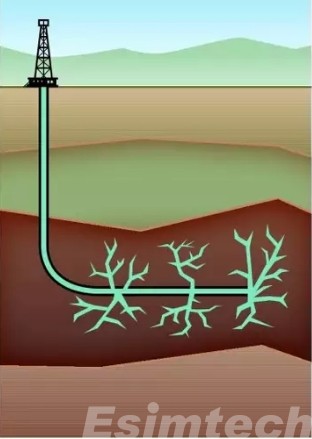
Challenges in Acid Fracturing
| Challenge | Description | Impact |
| Limited Fracture Length | Acid reacts quickly near the wellbore, limiting how far the fracture extends into the formation. | Reduced stimulated reservoir volume, potentially lower production gains. |
| Fluid Leakoff | Acid can leak off into the formation around the fracture, reducing the amount available for deeper penetration. | Less effective stimulation as less acid reaches target zones within the fracture. |
| Sustaining Conductivity | Channels created by acid dissolution may not stay open for long periods due to closure stress from the formation. | Reduced long-term benefit of the treatment, potentially requiring more frequent well interventions. |
| Formation Selection | Acid fracturing is most effective in carbonate formations that readily dissolve. | Limited applicability in formations like sandstone or those with high clay content. |
| High Temperatures | High temperatures can accelerate the acid reaction, leading to rapid spending before reaching deeper zones. | Reduced effectiveness of the acid treatment. |
| Corrosion and Wellbore Damage | The acid used can be corrosive to wellbore equipment. | Increased well completion costs due to potential damage and need for more corrosion-resistant materials. |
| Environmental Concerns | Spent acid and fracturing fluids require proper disposal to minimize environmental impact. | Adds complexity and cost to the process, with regulations varying by location. |
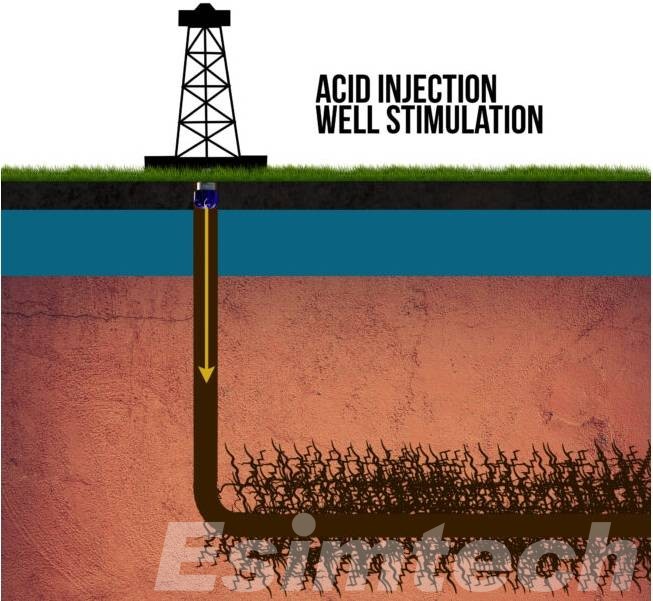
Innovative Techniques Tackling the Limitations of Acid Fracturing
1. Extending the Reach: Creating Farther-Reaching Fractures
- Diverting Agents 2.0: New, more sophisticated diverting agents are being developed. These can include degradable, self-activating materials that come online deeper within the fracture, ensuring the acid reaches its target zones.
- Nano-particles: Research is exploring the use of nanoparticles coated with acid. These particles could travel deeper into the formation before releasing the acid, creating fractures further away from the wellbore.
2. Fighting Fluid Leakoff: Keeping the Acid Focused
- Viscoelastic Fluids: New fracturing fluids are being designed with viscoelastic properties. These fluids can act like a temporary wall, reducing leakoff and channeling the acid towards the desired areas within the fracture.
- Chemical Foams: Specialized foams can be used to carry the acid. The foam can create a barrier between the acid and the formation, minimizing leakoff and allowing the acid to penetrate deeper.
3. Maintaining the Flow: Keeping the Channels Open
- Resin-Coated Proppants: Small particles coated with a thin layer of resin can be included in the fracturing fluid. The acid dissolves the rock, creating channels, and the resin coating on the proppant allows them to lodge in the fractures, keeping them propped open for longer periods.
- Self-Healing Polymers: Research is underway on incorporating self-healing polymers into the fracturing fluid. These polymers could form a network within the fractures, automatically repairing themselves if the closure stress starts to squeeze them shut.
4. Beyond Rock Reactivity: Addressing Formation Issues
- Chelating Agents: For formations with high clay content, chelating agents can be used alongside the acid. These agents bind with metal ions in the clay, preventing them from interfering with the acid’s effectiveness.
- Breaker Acids: For formations with high temperatures, specialized acid blends or “breaker” acids can be used. These acids are designed to react slower at higher temperatures, allowing for deeper penetration before spending themselves.
5. A Sustainable Future
- Recyclable Acid Systems: Researchers are developing closed-loop systems where spent acid from fracturing jobs can be captured, treated, and reused. This would minimize environmental impact and potentially reduce costs.
- Biodegradable Fracturing Fluids: Exploration is underway on developing fracturing fluids made from naturally occurring materials or polymers that can biodegrade over time. This would further reduce the environmental footprint of acid fracturing.
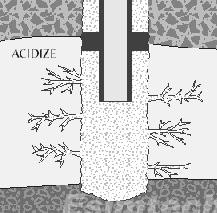
How Simulation Technology is Used in Acid Fracturing
1. Designing the Treatment
- Reservoir Modeling: Reservoir simulations can be used to understand the rock properties, formation pressure, and temperature. This data helps determine if acid fracturing is a suitable approach for the specific well and predicts the potential production improvement.
- Fracture Geometry Prediction: Simulations can model the expected size, shape, and direction of the fractures created by the acid injection. This helps engineers design the fracturing treatment parameters like pumping rates and fluid volumes.
2. Optimizing Acid Placement
- Fluid Flow Modeling: Fracturing and acidizing simulations can predict how the fracturing fluids, including the acid, will flow within the fracture and the formation. This helps identify potential issues like uneven acid distribution or excessive leakoff.
- Diverter Placement Strategy: By simulating the behavior of diverting agents, engineers can determine the best placement strategy to ensure the acid reaches the desired areas of the formation for optimal stimulation.
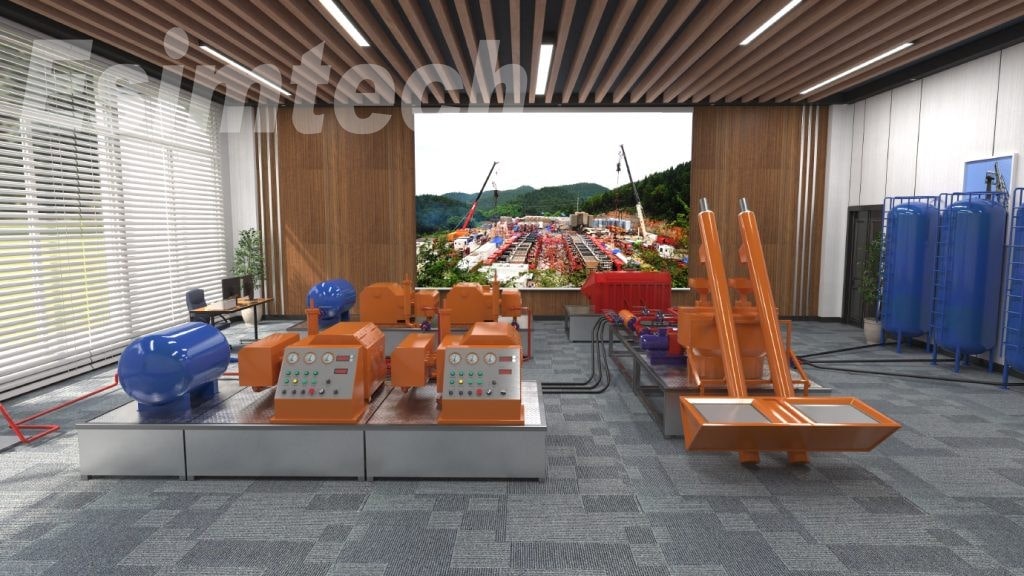
3. Understanding Treatment Effectiveness
- Post-Fracture Production Prediction: Simulations can be used to forecast well performance after the acid fracturing treatment. This helps assess the expected increase in oil and gas production and the potential duration of the production improvement.
- Comparison of Techniques: Simulations can be used to compare different fracturing techniques, including acid fracturing and proppant fracturing. This allows engineers to choose the most suitable and cost-effective approach for a particular well.
4. Benefits of Simulation Technology
- Reduced Costs: By optimizing the fracturing design and minimizing wasted materials, simulations can help reduce the overall cost of the acid fracturing treatment.
- Improved Effectiveness: Simulations can lead to a more targeted and effective acid fracturing job, maximizing well productivity gains.
- Reduced Risks: By identifying potential problems beforehand, simulations can help mitigate risks associated with the fracturing process, such as uneven fracture growth or equipment damage.
5. Types of Simulation Techniques
- Computational Fluid Dynamics (CFD): Simulates the flow behavior of the fracturing fluids within the fracture and formation.
- Discrete Fracture Network (DFN) Models: Represent the natural fracture network within the rock formation and predict how the acid interacts with these pre-existing fractures.
- Geomechanical Models: Take into account the rock’s mechanical properties to predict how the formation will respond to the stress induced by the fracturing process.
Conclusion
Acid fracturing is a valuable tool in the oil and gas industry, offering a cost-effective way to enhance production in specific well conditions. It’s important to understand its limitations and the ongoing advancements to improve its effectiveness and environmental impact.
